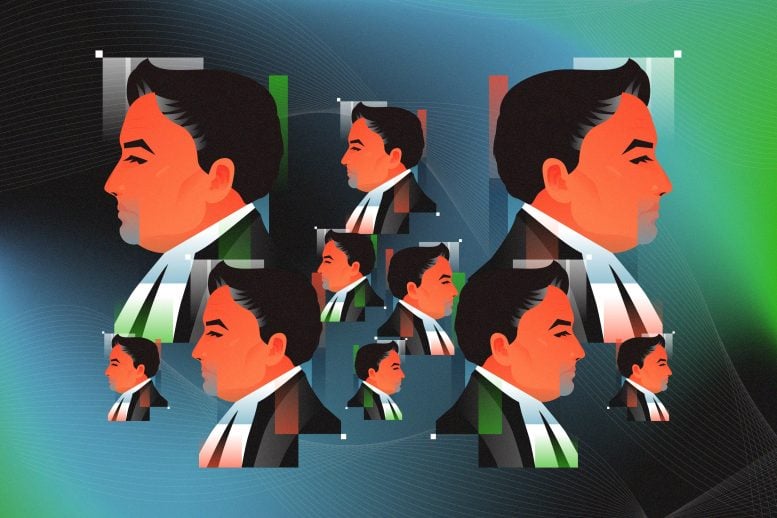
An international team of researchers has identified a quantum counterpart to Bayes’ rule.
The likelihood you assign to an event is influenced by what you already believe about the surrounding conditions. This is the basic principle of Bayes’ rule, a method for calculating probabilities first introduced in 1763. An international group of scientists has now demonstrated how this rule also applies within the realm of quantum physics.
“I would say it is a breakthrough in mathematical physics,” said Professor Valerio Scarani, Deputy Director and Principal Investigator at the Centre for Quantum Technologies, and member of the team. His co-authors on the work published in Physical Review Letters are Assistant Professor Ge Bai at the Hong Kong University of Science and Technology in China, and Professor Francesco Buscemi at Nagoya University in Japan.
“Bayes’ rule has been helping us make smarter guesses for 250 years. Now we have taught it some quantum tricks,” said Prof Buscemi.
While researchers before them had proposed quantum analogues for Bayes’ rule, they are the first to derive a quantum Bayes’ rule from a fundamental principle.
Conditional probability
Bayes’ rule takes its name from Thomas Bayes, who first described conditional probability in ‘An Essay Towards Solving a Problem in the Doctrine of Chances’.
Imagine a situation where someone receives a positive flu test. They might have already suspected illness, but the test result shifts how they assess their condition. Bayes’ rule offers a framework for calculating the likelihood of flu that accounts not only for the test outcome and the chance of error but also for the person’s prior assumptions.

The rule treats probability as a measure of belief in the likelihood of an event. This perspective has been controversial, since some statisticians argue that probability should represent something “objective” rather than belief-based. Still, when prior knowledge and assumptions matter, Bayes’ rule serves as a widely accepted reasoning tool. For this reason, it has become essential in fields ranging from medicine and meteorology to data science and machine learning.
Principle of minimum change
When calculating probabilities with Bayes’ rule, the principle of minimum change is obeyed. Mathematically, the principle of minimum change minimizes the distance between the joint probability distributions of the initial and updated belief. Intuitively, this is the idea that for any new piece of information, beliefs are updated in the smallest possible way that is compatible with the new facts. In the case of the flu test, for example, a negative test would not imply that the person is healthy, but rather that they are less likely to have the flu.
In their work, Prof Scarani, who is also from NUS Department of Physics, Asst Prof Bai, and Prof Buscemi began with a quantum analogue to the minimum change principle. They quantified change in terms of quantum fidelity, which is a measure of the closeness between quantum states.
Researchers always thought a quantum Bayes’ rule should exist because quantum states define probabilities. For example, the quantum state of a particle provides the probability of it being found at different locations. The goal is to determine the whole quantum state, but the particle is only found at one location when a measurement is performed. This new information will then update the belief, boosting the probability around that location.
Deriving a quantum Bayes’ rule
The team derived their quantum Bayes’ rule by maximizing the fidelity between two objects that represent the forward and the reverse process, in analogy with a classical joint probability distribution. Maximizing fidelity is equivalent to minimizing change. They found in some cases their equations matched the Petz recovery map, which was proposed by Dénes Petz in the 1980s and was later identified as one of the most likely candidates for the quantum Bayes’ rule based just on its properties.
“This is the first time we have derived it from a higher principle, which could be a validation for using the Petz map,” said Prof Scarani. The Petz map has potential applications in quantum computing for tasks such as quantum error correction and machine learning. The team plans to explore whether applying the minimum change principle to other quantum measures might reveal other solutions.
Reference: “Quantum Bayes’ Rule and Petz Transpose Map from the Minimum Change Principle” by Ge Bai, Francesco Buscemi and Valerio Scarani, 28 August 2025, Physical Review Letters.
DOI: 10.1103/5n4p-bxhm
Never miss a breakthrough: Join the SciTechDaily newsletter.
3 Comments
Из этого возникающая для материи в одной системе сил и масштабов синхронизация, выглядит как явление имеющее следующую закономерность. В подогретом хаосе центром синхронизации становятся избыточные силы, при остывании минимальные точки. И синхронизация как способность к самоорганизации может передаваться через тела имеющие, другое строения но имеющие те же действующие силы.
Curious to learn everything.
The team derived their quantum Bayes’ rule by maximizing the fidelity between two objects that represent the forward and the reverse process, in analogy with a classical joint probability distribution. Maximizing fidelity is equivalent to minimizing change. They found in some cases their equations matched the Petz recovery map, which was proposed by Dénes Petz in the 1980s and was later identified as one of the most likely candidates for the quantum Bayes’ rule based just on its properties. His co-authors on the work published in Physical Review Letters.
Ask the researchers:
Is your understanding of the quantum Bayes’ rule scientific?
The value of science lies in revealing truth rather than maintaining dogma. Only by adhering to the universality of symmetry and deepening our understanding of the nature of spacetime through theories like Topological Vortex Theory can physics avoid the trap of pseudoscience and truly move toward the ultimate unification of the universe. Audiences call for a return to symmetry-dominated scientific rationality and the rejection of pseudoscientific constructs.
If researchers are truly interested in science, please visit https://zhuanlan.zhihu.com/p/1952302320672043229.